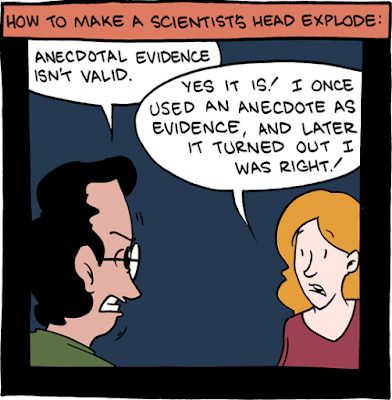The claim circulating is that WIV was awarded a $3.7mil grant from NIAID under President Obama's administration and that illegal viral research was the reason we have #covid19. I was first made aware of this story on April 21 by my father who texted me about it.
I didn't know the specifics of where he was getting that idea, but I did my best to explain BSL4 labs and that any funding to WIV was likely a response to the knowledge that Sars-coV1 emerged in a bat populations in 2003. And that research on viruses wasn't illegal.
I will admit that after that conversation I didn't think about the narrative much. But now I see that Rudy Guiliani and others are actively trying to amplify this narrative to discredit Dr. Fauci's expertise and cast another shadow on the Obama administration.
 |
| Make a claim, you have to evidence to back it up. |
Background: some of the first sources to make the claim that Obama era NIAID funded WIV were FL rep Matt Gaetz and the UK Daily Mail. They cited a Nov 2017 paper from researchers at WIV on coronaviruses as proof. Just a reminder that Gaetz showed up to work like this on 3/4.
 |
| Very subtle. |
The funding in question is highlighted here. NIAID is the NIH institute that focuses on infectious disease. It's pretty easy to look up grants using R01 numbers. So let's see who the money was awarded to.
 |
| All research papers disclose the source of funding. |
The grant was for a project entitled "UNDERSTANDING THE RISK OF BAT CORONAVIRUS EMERGENCE" and it was actually made to a non-profit in NY called EcoHealth Alliance. Their stated purpose is to aid scientists around the world to prevent pandemics.
 |
| EcoHealth Alliance Mission Statement |
So in 2014, the NIAID awarded $666,442 to EcoHealth Alliance for a project to study bat coronaviruses. This project was renewed in 2015, 2016, 2017, 2018, and 2019. The total money awarded to date is where the $3.7mil figure comes from.
EcoHealth Alliance distributed funds to researchers in multiple labs globally studying bat coronaviruses, including to WIV. Quite a few papers have been published that cite this R01 grant. A lot of work does center in China because that's where the bat reservoirs are.
 |
| One recent paper partially supported by R01AI110964 |
In October 2014, the Obama administration announced that they were pausing new funding related to gain-of-function research for influenza, SARS, and MERs. Gain-of-function is the key phrase here.
 |
| 2014 White House Announcement |
There was definitely a bit of debate about this type of research - engineering viruses known to cause human disease - because of mistakes made in certain labs. Here's an NPR piece from Nov 2014 about the moratorium.
So does that mean that research funded by R01AI110964 was prohibited? No. The research funded by this grant has centered on tracking and identifying naturally occurring coronaviruses - not engineering them. The research was carried out in facilities equipped to do that work.
Additionally, EcoHealth Alliance earned the initial grant award in May 2014 before the moratorium. The subsequent renewals indicate that the research funded by the grant money did not violate the moratorium. Otherwise the grant would not have been renewed.
For those of you who are curious, the US moratorium on funding for research into engineering viruses was lifted in December 2017. Who was president then?
 |
| HINT: Not President Obama |
The grant was renewed for 5 years during both the Obama and Trump administrations. None of the published work funded by the research grant was gain-of-function experiments. However, it has been "legal" to do that work since Dec 2017 under Trump's administration.
The reality is that to prevent future global pandemics (and to deal with this one for that matter) we need all experts to be able to study emerging viruses, their reservoirs and collaborate. It cannot be an US versus them approach (pun intended).
And with that, I'm done.











